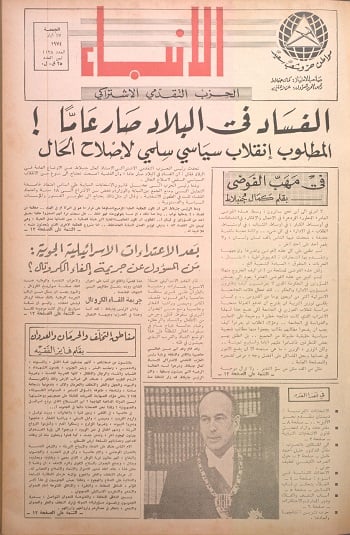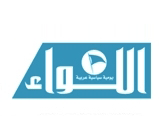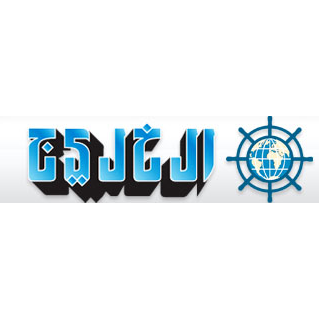Beirut bombs are more than spillover
Rami G. Khouri
25 نوفمبر 2013
The Daily Star
The two suicide attacks against the Iranian Embassy in Beirut last week represent something far more dangerous than simply more spillover from the war in Syria. It would be analytically much more useful to see this development in the context of three older phenomena that have now come together to bring us to the brink of an Armageddon-like confrontation among two gigantic indigenous forces that can ravage the entire Middle East.
The two forces are the Iranian-Arab Shiite revolutionary Islamists headed by Iran and Hezbollah, and the collection of disparate, mostly Arab, Sunni Salafist, takfiri and fundamentalist militants that are either closely linked to Saudi Arabia or ideologically spawned by Al-Qaeda. The attack on the Iranian Embassy in Beirut – assuming it was done by the Al-Qaeda-linked Abdullah Azzam Brigades – marks the important moment when these two forces emerged from the shadows and their many proxy wars in Yemen, Iraq, Lebanon, Palestine, Syria and Somalia, and now attack each other directly, in broad daylight, and with appropriate media announcements.
The three older phenomena I mentioned that have come together here and now, and that must be seen as the underlying drivers of this horrendous regional confrontation among different Islamist ideologies, are, a) the development of organized Salafist/takfiri groups (militant, often terroristic, hard-line fundamentalist Islamists such as Al-Qaeda) that focus in part on killing Shiites while cleansing Sunni lands of all infidels, starting with Al-Qaeda’s birth and Abdullah Azzam himself in Afghanistan/Pakistan in the 1980s; b) the growing use of suicide bombers as instruments of warfare and resistance to foreign occupation in the Middle East and South Asia, also starting in the early 1980s; and c) the steady expansion and growth of Salafist/takfiri groups in the Iraq-Syria-north Lebanon region since the Anglo-American invasion of Iraq created the conditions that unleashed the new violent Sunni-Shiite confrontations that have marked our generation.
Last week’s embassy attack in Beirut signifies the point where Salafists/takfiris who have proliferated since 2003 now directly and simultaneously attack targets in Iraq, Syria and Lebanon; it should clarify, for those who were not aware, that these vicious criminals are at war with everyone in the Middle East – Arabs, Iranians, Sunnis, Shiites, Israelis, Americans … you name it, they hate it and will bomb it.
Iran and the United States now share a common enemy and threat that has attacked them both. As such, I suspect we will see Washington and Tehran continue working to resolve the nuclear issue so that they can address the much more direct Salafist/takfiri threat that plagues everyone in the region. These militants are growing by perhaps the tens of thousands in Syria and Iraq, and everyone in the Middle East will soon start to work together to stop them, so the diplomatic consequences of the embassy attack could be dramatic.
The embassy bombing is an escalation of just one grade over other equally meaningful recent escalations, which included unprecedented car bomb and missile attacks against Hezbollah targets in southern Beirut. These escalations against Iran and Hezbollah are no surprise, given those two parties’ military role in Syria in support of the Assad regime and Hezbollah’s openly declared war against the Salafist-takfiris in Syria. But it would be a mistake to see this confrontation mainly in terms of spillover from the war in Syria, because Salafist/takfiris have been menacing and attacking various Arab targets in the Middle East for the past decade or more, well before the Syria war began.
The more accurate analytical approach would be to see Syria as representing a dramatic escalation of the spread of organized Salafist/takfiris from their genesis in Afghanistan-Pakistan and their recent Levantine anchorage from Iraq post-2003. Iran and the U.S., with everyone else in the region, will want to dampen this expansion of Salafist/takfiri groups and operations, but they will soon realize that this cannot be done mainly through military means. The U.S. armed forces and CIA can probably provide nifty graphs and charts that show how these criminal groups have grown, spread and become more vicious in direct proportion to the United States’ expanded use of drone assassinations and torture against suspected terrorists during the past 12 years. Foreign bombs do not quell Salafist-takfiris, but only spawn their faster expansion.
These groups can only develop and operate in ungovernable zones of chaos, which is why they mostly operate from Afghanistan, northwest Pakistan, Yemen, Somalia, Mali, Libya, Iraq, Syria and parts of north Lebanon. Countering them requires removing the political, nationalistic and socio-economic grievances that cause thousands of outraged and desperate, yet directionless and unanchored, young men to join their ranks. Defeating them for good will be a tough task that can only be achieved by Iranians, Arabs, Turks and foreign governments working together to address the underlying causes that allow such criminal groups to see the light of day in the first place. These underlying causes include Arab official corruption, tyranny and incompetence, Israeli colonialism and other criminal deeds, and Anglo-American-Russian invasions of Muslim-majority lands – all leading to mass Arab humiliation and vulnerability. This really is a tough agenda, which has bred some wild killers who now roam freely among us.
 عن أمل جنبلاط المتجدد: لبنان يستحق النضال
عن أمل جنبلاط المتجدد: لبنان يستحق النضال
 صحافيون أم عرّافون!
صحافيون أم عرّافون!
 ماذا يجري داخل أروقة بيت الكتائب المركزي؟
ماذا يجري داخل أروقة بيت الكتائب المركزي؟


 عن الخرائط التي تُرسم والإتفاقات التي تتساقط!
عن الخرائط التي تُرسم والإتفاقات التي تتساقط!
 “الإنحراف في الحياة”/ بقلم كمال جنبلاط
“الإنحراف في الحياة”/ بقلم كمال جنبلاط
 هاشتاغ #صار_الوقت يحل أولاً في حلقة جنبلاط
هاشتاغ #صار_الوقت يحل أولاً في حلقة جنبلاط
 طاولة نقاش عن أزمة الصحافة في جامعة AUST
طاولة نقاش عن أزمة الصحافة في جامعة AUST
 عبدالله: ليظهر لنا وزير مكافحة الفساد حرصه في صفقات البواخر والفيول
عبدالله: ليظهر لنا وزير مكافحة الفساد حرصه في صفقات البواخر والفيول
 عبدالله: غريب أمر وزارة مكافحة الفساد!
عبدالله: غريب أمر وزارة مكافحة الفساد!

 Comment to Uri Avnery: How Sad What Is Looming Ahead
Comment to Uri Avnery: How Sad What Is Looming Ahead
 “Not Enough!”
“Not Enough!”
 … لمن لم يقرأ يوسف البعيني/ بقلم وسام شيّا
… لمن لم يقرأ يوسف البعيني/ بقلم وسام شيّا
 كمال جنبلاط في مولده الأول بعد المائة: تعاليمه وأفكاره ما زالت الحلّ/بقلم عزيز المتني
كمال جنبلاط في مولده الأول بعد المائة: تعاليمه وأفكاره ما زالت الحلّ/بقلم عزيز المتني
 رئيس حزب/ وليس (… سابقاً)/ بقلم د. خليل احمد خليل
رئيس حزب/ وليس (… سابقاً)/ بقلم د. خليل احمد خليل
 التوازن السياسي في لبنان
التوازن السياسي في لبنان
 لبنان… مشاريع انقلابية مؤجلة
لبنان… مشاريع انقلابية مؤجلة
 جنبلاط وحَمَلة أختام الكاوتشوك
جنبلاط وحَمَلة أختام الكاوتشوك
 Le Liban est un symbole de tolérance
Le Liban est un symbole de tolérance
 Our Automated Future
Our Automated Future
 The True Origins of ISIS
The True Origins of ISIS
 Les Misérables vs. Macron
Les Misérables vs. Macron
 عذراً أيها المعلم/ بقلم مهج شعبان
عذراً أيها المعلم/ بقلم مهج شعبان
 رساله الى المعلم / بقلم ابو عاصم
رساله الى المعلم / بقلم ابو عاصم
 إلى روح القائد والمعلم كمال جنبلاط/ بقلم أنور الدبيسي
إلى روح القائد والمعلم كمال جنبلاط/ بقلم أنور الدبيسي
 أسرار وعناوين الصحف ليوم الجمعة 14 كانون الاول 2018
أسرار وعناوين الصحف ليوم الجمعة 14 كانون الاول 2018














